
INTRODUCED in the Ranger Raptor and now available in mainstream Ranger models, Ford’s new 2.0-litre four-cylinder diesel and accompanying 10-speed automatic is also now available in the Everest wagon. It’s offered alongside the existing 3.2-litre five-cylinder diesel; no surprise, really, as the Everest is Ranger-based anyway and everything new in Ranger generally finds its way into the Everest.
Astonishingly, the new 2.0-litre four gives away nearly 40 per cent in capacity to the 3.2-litre five, but it claims more power and – even more surprisingly – more torque, given that increased engine capacity generally equates to greater torque output.
Ford claims 500Nm for the 2.0-litre, or 30Nm more than the 3.2-litre, while the 2.0-litre’s 157kW is 14kW more than the 3.2 makes in the Everest; so this ‘little’ engine is punching well above its weight.
Keeping the 2.0-litre Everest honest in this contest is a Holden Trailblazer, which also claims 500Nm; although, from a considerably larger 2.8-litre four-cylinder diesel. Like the Everest the Trailblazer is also a ute-based, seven-seat wagon, in this case being built off the back of Holden’s Colorado.
Holden Trailblazer LTZ - Take Two
The Colorado 7 became the Trailblazer in 2017, but the difference is much more than a name change.
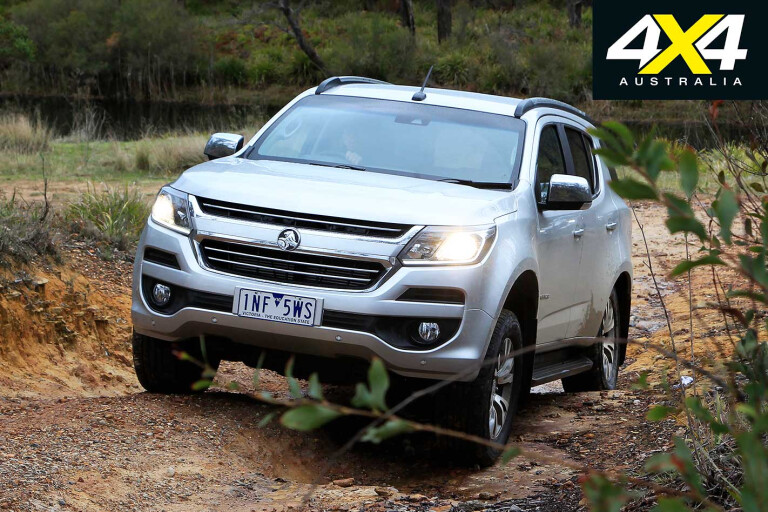
IN LATE 2012 Holden launched the Colorado 7, a 4x4 wagon based on its then-new Colorado ute. Unlike the first Holden ute to bear the Colorado name (and every Rodeo before that), the new Colorado was a 100 per cent General Motors design and not merely a rebadged Isuzu.
The new Colorado arrived in mid-2012, with the Colorado 7 wagon following a few months later and joining Mitsubishi’s Triton-based Challenger in what was soon to become a booming ute-based wagon market.
Following a lukewarm reception the Colorado 7 was tweaked just 12 months later and then again in 2014, before being reborn as the Trailblazer for 2017, thanks largely to the efforts of Holden’s Australian engineering team.
While many of the 2017 changes were applied to the Trailblazer globally, many were also specific to Australian models, making ‘our’ Trailblazer the pick of this globally available model.
What's in a name?

MORE than just a new name for an existing model, the Trailblazer was born of a Colorado 7 that was stripped right down to its component parts and put back together again with a large number of new and revised parts.
The key changes include repositioned engine balance shafts, more sophisticated fuel injection with additional injector sound proofing, a new torque convertor, revised shift protocols for the six-speed auto gearbox, retuned suspension, and new engine, transmission and body mounts.
Body tweaks ran to new roof mouldings, exterior mirror mounts, door seals, sliding glass channels, B-pillar inserts and a thicker windscreen, and all generally in the interest of quieter and smoother running. Electric power steering replaced the hydraulic power steering.
Powertrain & Performance
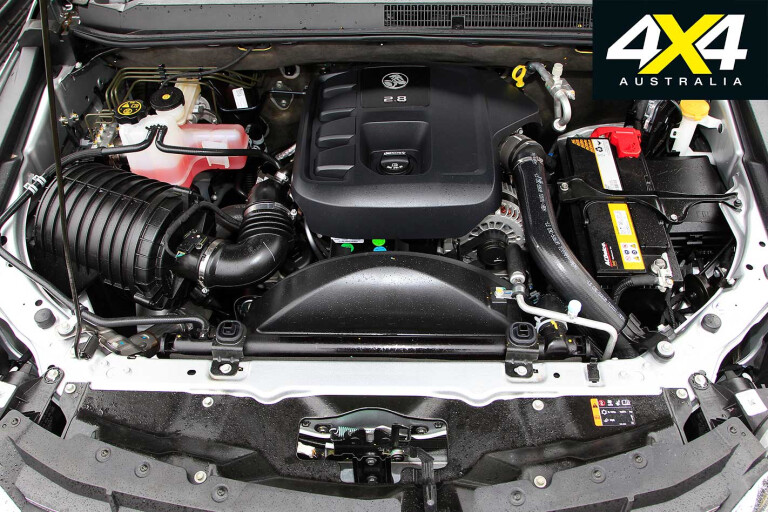
THE Trailblazer’s 2.8-litre four-cylinder diesel is essentially a VM Motori design from a time when the Italian diesel-engine specialist was part-owned by General Motors. However, there’s more GM design in the engine now, most notably the 2017 (Colorado 7 to Trailblazer) upgrades that fattened out the power delivery but more importantly brought newfound refinement in terms of smoother and quieter running.
This is an energetic and willing engine that lives up to its solid 147kW/500Nm promise, with plenty of highway performance. It’s quite revvy for a diesel but well-served by the six-speed GM automatic, with sporty shift protocols keeping the engine ticking along nicely in varying conditions under loads, and it provides well-timed auto downshifts on hill descent, even without brake prompt.

Good refinement, too, from the engine and the gearbox; although, jumping from the Trailblazer to the Everest puts this into perspective – driven in isolation you’ll like the Trailblazer’s powertrain, but drive it after the Everest 2.0L and it’s just a little noisy and gruff.
On-road Ride & Handling

GET BEHIND the wheel of the Trailblazer and you can’t help but notice the extra-light steering effort at parking speeds provided by the electric power steering, one of the notable changes from the Colorado 7. At the same time you’ll appreciate the positive and connected feel the steering has at highway speed thanks to efforts of the local engineers.
It has tidy handling, too, and a generally smooth, quiet and compliant ride on most roads; another improvement over the Colorado 7. However, drive it back-to-back with the Everest and it’s not quite as smooth riding, nor as quiet, and it feels the bad bumps and potholes more.
Crucially the Trailblazer has a part-time 4x4 system whereas the Everest has full-time 4x4, which is a significant safety advantage on wet roads and adds general driving convenience in mixed conditions. Unusually, the Trailblazer has a mechanical rear limited-slip differential in addition to its electronic traction control, a feature that is, in part, designed to provide more security on wet roads.
Off-road

JUST AS the Trailblazer’s on-road demeanour is much improved upon the Colorado 7’s, so too is its off-road ability, thanks to an off-road-specific recalibration of the electronic traction control.
The Trailblazer isn’t over-endowed with suspension travel, nor does it have a rear locker, so the revised traction control is most welcome and will see the Trailblazer edge forward in conditions that could strand a Colorado 7.
Is the Trailblazer a gun off-road wagon? No, but it will still do all most buyers would ever ask and betters the two most popular sellers in the ute-based-wagon class (MU-X and Pajero Sport) in difficult off-road conditions. Still, the Everest has more tractive ability in difficult off-road going, thanks to its longer suspension travel and a rear locker.
Bonus points, though, for the Trailblazer’s engine air-intake via the inner mudguard and the fact it has two tie-downs (rated at 1500kg each) as standard.
Cabin, Accommodation & Safety
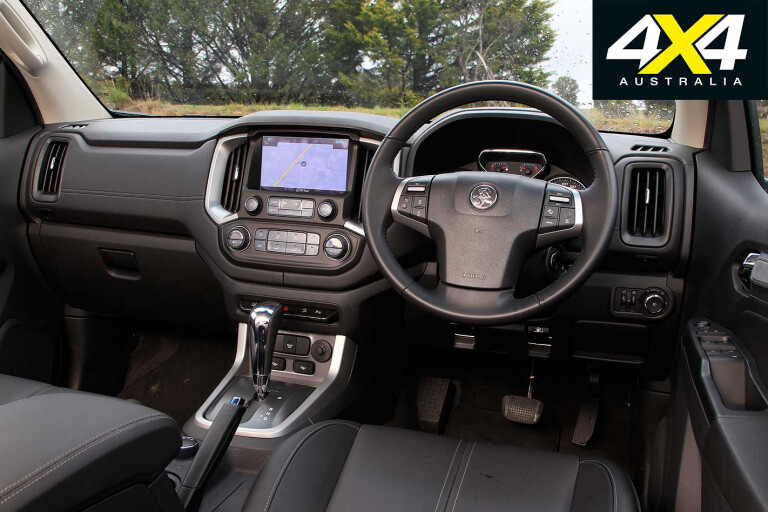
BEING an LTZ variant our test vehicle had the luxury of leather and heated front seats with electric adjustment for the driver. Plenty of safety kit, too, with seven airbags, which help contribute to the five-star ANCAP safety rating.
The Trailblazer is spacious and comfortable up front, but there’s no steering wheel reach adjustment for the driver. A good-sized second row, too, with a little more hip and shoulder room than the Everest’s, even if the Everest has more legroom and the benefit of fore and aft adjustment.
Access to the third row is easy enough, and there’s some room for adults, even if the seating position is very legs-up and there’s not much adult-sized footroom.

The way the Trailblazer’s third-row seats fold makes for a high cargo floor and, annoyingly, there are only two cargo hooks at the rear of the luggage space and none at the front. When the third-row seat is in place, there’s very little luggage space left.
What you get
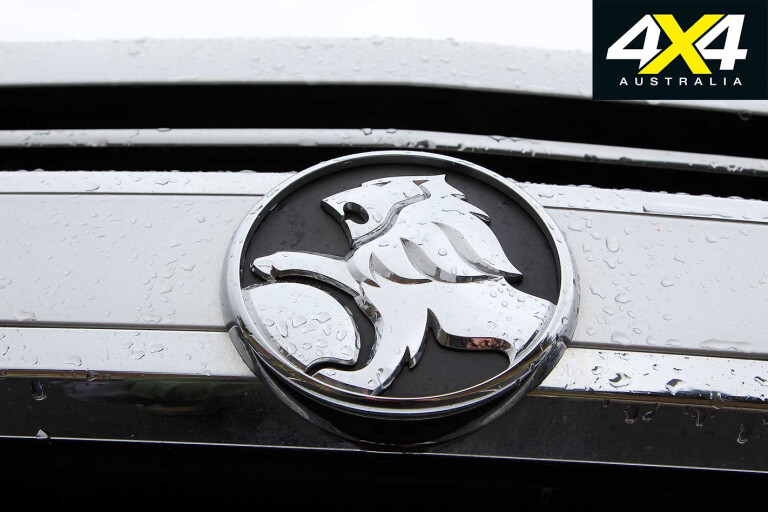
THE Trailblazer comes in three equipment levels: LT, LTZ and Z71. Standard LT kit includes front, side, curtain and driver’s knee airbags, LED DRLs, reversing camera, rear-parking sensors, seven-inch touchscreen, Apple CarPlay and Android Auto.
The LTZ adds leather, sat-nav, front parking sensors, climate control A/C, rain-sensing wipers, tyre-pressure monitoring, and safety features including forward collision alert, blindspot monitoring, lane-departure warning and rear cross-traffic alert. It also adds an eight-inch touchscreen and 18s. The Z71 brings largely cosmetic enhancements including black-finished wheels, body mouldings, mirrors and door handles.
Practicalities
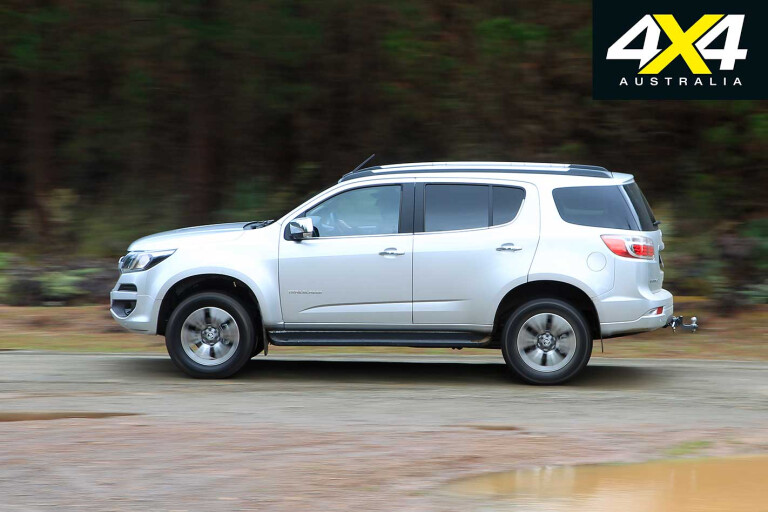
HOLDEN’S wide spread of dealers, especially in rural and regional areas, is an ownership plus, as is the capped-price servicing and the fact there’s a good range of aftermarket kit available for specific vehicle enhancement.
The standard 265/65R18 wheel and tyre package is also common to pleny of new 4x4s so there’s a wide aftermarket tyre choice. You can also fit the 17s off the LT for an even wider and more off-road-practical tyre choice.
Ford Everest Trend - Peak Performance
A 2.0-litre, four-cylinder engine in a 2.5-tonne 4x4 wagon… how could that work?
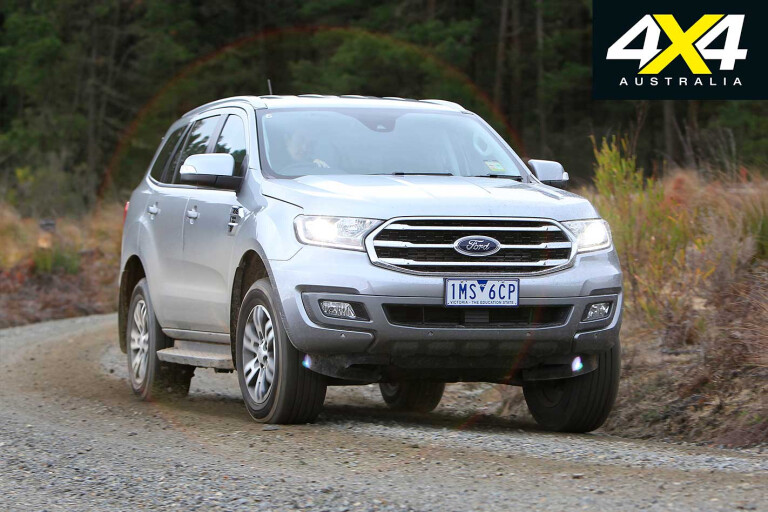
FORD’S new 2.0-litre bi-turbo diesel and accompanying 10-speed auto is tomorrow’s powertrain here today.
Already available in Ranger as an option to the existing 3.2-litre inline five-cylinder, and the only powertrain available in Ford’s new hero model, the Ranger Raptor, it’s the sort of diesel technology that will become more common over the next decade – and typical of the diesel’s swansong, as emission regulations become tighter and so-called ‘diesel bans’ come into play sometime after that.
Ford is hedging its bets by offering both new and existing powertrains in the Everest and Ranger, given the swap from 3.2-litre five to 2.0-litre four means going from offering the biggest engine in the respective classes in which the Everest and Ranger compete to offering the smallest engine. In the case of the Ranger, the 3.2 also leaves open the availability of a manual gearbox, as the new 2.0-litre four is only available with an automatic.
Powertrain & Performance
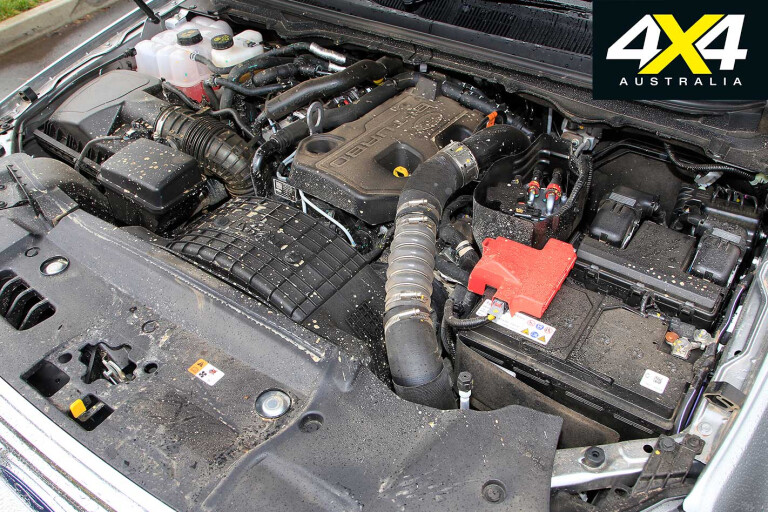
FIRE up Everest’s four-cylinder bi-turbo diesel and the first surprise is how quiet and smooth it is. The next surprise is how lively it feels once underway – this is no small engine struggling to push a big and heavy 4x4; this is a small engine that feels like a big engine. Drive it back-to-back with a 3.2 and it’s the bigger engine that feels like the smaller engine.
The 2.0-litre achieves its maximum torque of 500Nm by 1750rpm, the same engine speed that the 3.2 achieves its 470Nm maximum output. The 2.0-litre then goes on to make more power than the 3.2 largely due to the fact it can rev a little harder. That’s the benefit of the 2.0-litre’s bi-turbo system: there’s a small fast-spooling turbo to get the engine up and running strongly at low engine speeds, and then a big turbo to take over and pump the big volume of intake air needed to produce good power at higher engine speeds.
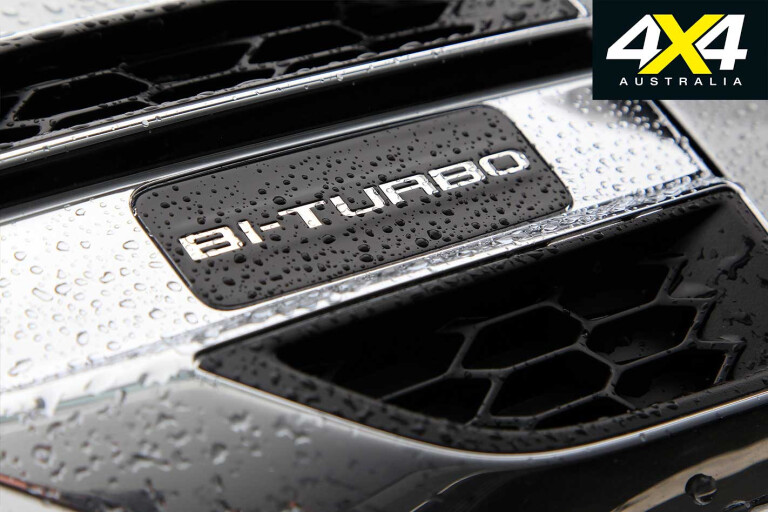
Adding to the 2.0-litre’s power advantage is the close ratios and near instant shifts of the 10-speed auto. The first eight gears of the ten-speed are all effectively lower than top gear in the six-speed, even when you take into account the taller final-drive gearing of the 10-speed. And the shifts between all these gears are as good as instantaneous, so time isn’t lost there.
The 10-speed also offers manual gear selection via a rocker-style switch on the side of the shifter, but, such is the ‘smarts’ of this gearbox, manual shifting is as good as redundant.
Compared to the Trailblazer the Everest’s engine is more refined, quieter and smoother, and the gearbox slicker and more seamless. But there’s not much performance difference between the two thanks largely to the fact the Everest is 200kg heavier than the Trailblazer. The Trailblazer is equally strong on torque, even if it needs a few more revs to get there, and it’s not very short on power: 147kW versus 157kW.
On-road Ride & Handling

SUPERIOR on-road ride and handling refinement defines the Everest over the Trailblazer, as there’s less road noise and the ride is more supple and compliant. Generally tidier handling, too, on faster, bumpier roads, perhaps due in part to the Everest having a sophisticated ‘engineer’s solution’ in a Watt’s Link rather than a cruder ‘production-cost solution’ Panhard rod to laterally locate the live axle, which does heaps to reduce the rear bump-steer. Or it may be just the Everest’s generally more compliant suspension.

However, there’s no doubt the Everest’s full-time 4x4 system, which apportions drive 40/60 front-to-rear on a high-traction surface but can direct the power to either axle when needed, is a major safety and convenience benefit over the Trailblazer’s part-time 4x4 system, particularly on slippery roads and especially for less skilled and experienced drivers – these are family wagons after all.
Like the Trailblazer, the Everest has electric power steering for much-reduced effort at parking speeds and, like the Trailblazer, the steering weighting firms up nicely at highway speeds, even if it never quite feels as connected as the Holden’s.
Off-road

THE Everest wins the off-road arm-wrestle thanks largely to its superior wheel travel. If keeping the wheels on the ground more often isn’t enough, then the Everest has a rear locker the driver can engage, which is something missing on the Trailblazer. Making it a win-win-win situation, when the Everest’s rear locker is engaged the electronic traction control stays active on the front axle, which is often not the case with the current crop of driver-switched rear lockers.
The Everest’s electronically controlled 4x4 system also comes with Terrain Management, with a setting for Snow/Mud/Grass, Sand, and Rock Crawl, which tweaks engine mapping, gearbox shift protocols and the chassis electronics to optimise off-road performance.
Otherwise, the Everest and Trailblazer have similar ground and body clearance, and while the Everest claims 200mm more wading depth, the engine air-intake is more exposed.
Cabin, Accommodation & Safety
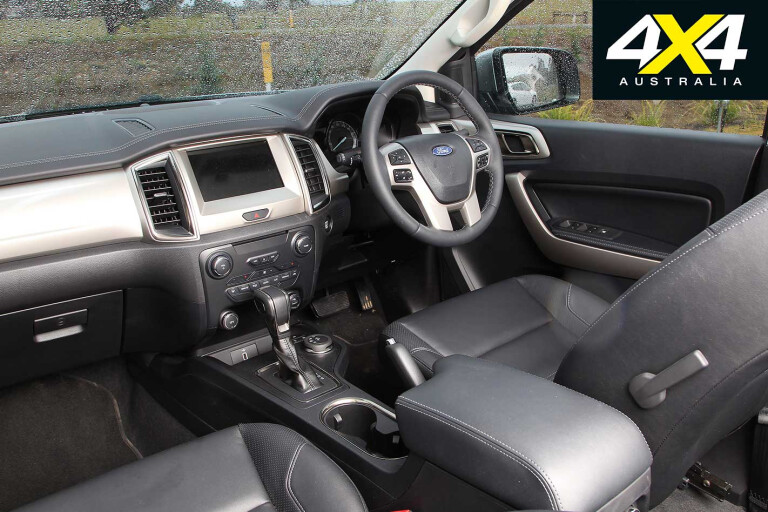
NEW to the Everest is smart-key entry and push-button start, a feature that’s now standard across all 2019 models. The Everest’s cabin is nicely detailed and finished – better so than the Trailblazer – even if some of the switchgear can be quite fiddly and difficult to use.
The Trend, as tested here, comes with leather and electric adjust for the driver but no heating for the front seats. For that you need to splash some $13K extra on the Everest Titanium.
Up front the Everest is spacious and comfortable, even if there’s still no steering-wheel reach adjustment. The middle- and third-row seat space is similar to the Trailblazer, but the fact the Everest’s middle-seat can be adjusted fore and aft lets you balance the legroom between the second and third rows.
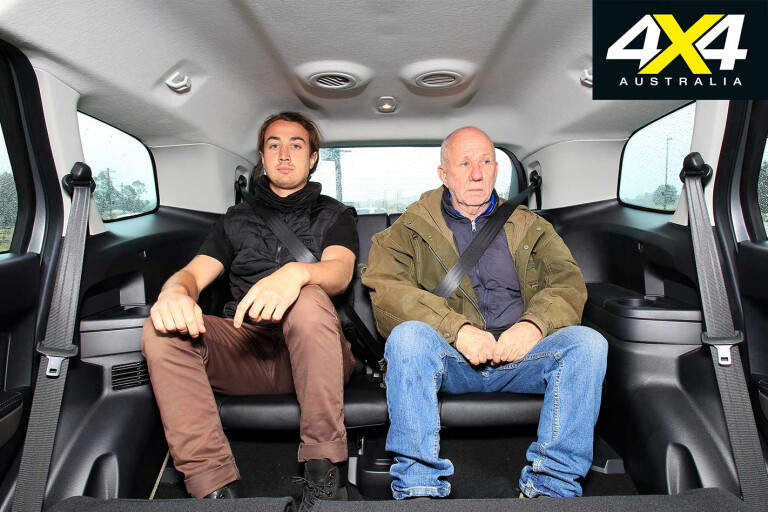
There’s also more luggage room behind the third-row seat in the Everest when the seat is up. Four rather than two tie-down hooks in the luggage area is another handy Everest bonus, given the two hooks in the Trailblazer don’t really work.
Seven airbags and autonomous braking leads the safety kit (see What You Get breakout) to a five-star ANCAP rating.
Everest for everyone
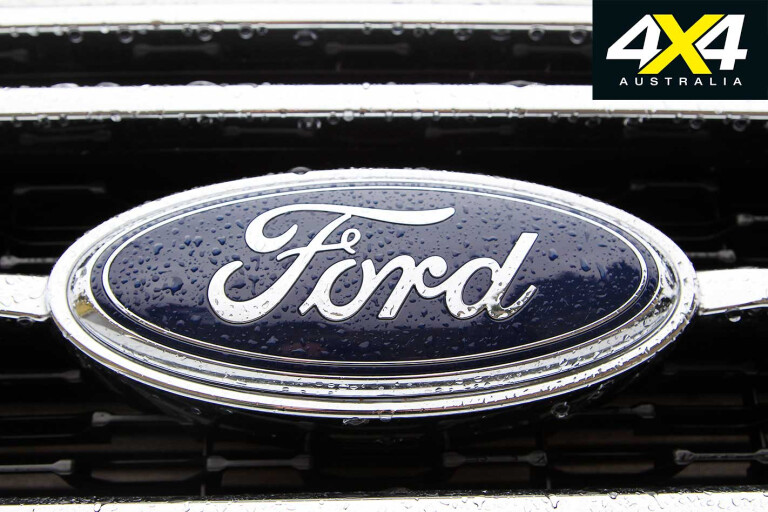
UNLIKE the three mechanically identical Trailblazer models that vary only in equipment, the Everest’s six models span two different powertrains and include RWD models. The entry-level Ambiente only comes with the established 3.2-litre five-cylinder diesel and six-speed automatic, but it’s offered in both 4x4 and 4x2 (for a $5K saving).
The mid-spec Trend retains the 3.2 in 4x4 models but adds the new 2.0-litre 10-speed powertrain in both 4x4 and 4x2. Again, the 4x2 model saves $5K over the 4x4 model while the 2.0-litre four comes at a $1200 premium over the 3.2-litre five. The top-spec Titanium is 2.0-litre and 4x4 only.
What you get
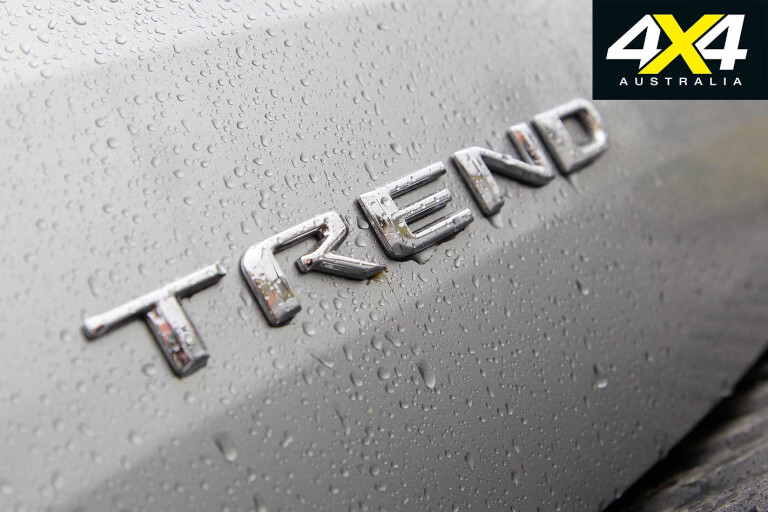
THE Everest’s 2.0-litre 10-speed powertrain is available in Trend and Titanium only. Trend kit extends to smart-key entry and start, leather, power-adjust driver’s seat, dual-zone climate control, eight-inch touchscreen, sat-nav, 10-speaker audio with digital radio and single CD player, two USB ports, three 12V outlets, a 230V outlet, rain-sensing wipers, auto headlights, third row seats, LED DRLs, 18s and a rear locker.
Safety kit includes autonomous braking, radar cruise, lane-keeping assist and front, side, curtain and driver’s knee airbags. Titanium adds heated front seats, power-adjust passenger seat, power folding third-row seats, park-assist, a sunroof, tyre-pressure monitoring, blindspot and cross-traffic alert, a towbar, sidesteps and 20s.
Practicalities
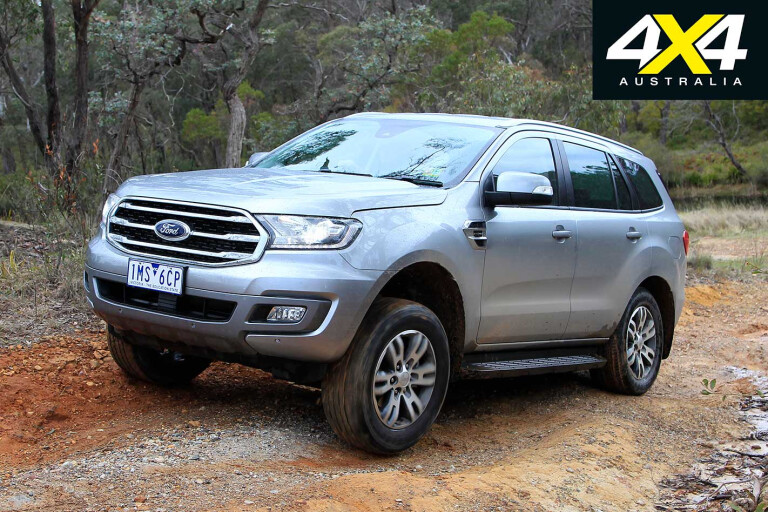
THE Everest proved a little more economical than the Trailblazer on test and has a slightly bigger tank, so it has close to 100km extra range on our fuel figures; even if both could do with long-range tanks.
The Everest also edges out the Trailblazer in towing capacity (by 100kg) and payload (by 70kg). The Everest Trend has an 18-inch wheel and tyre package that mirrors the popular Ranger XLT (and Hilux for that matter), and it can be swapped to 17s for even more aftermarket tyre options.
The Verdict - Bang for your Bucks

THE basic equation is this: the Everest 2.0-litre is nearly $10K more expensive than the Trailblazer LTZ, but that $10K buys a fundamentally better 4x4 wagon in terms of powertrain refinement, on-road comfort and off-road ability. It also brings with it the safety and convenience of full-time 4x4.
However, while you can’t get a less expensive Everest with the new 2.0-litre/10-speed powertrain (only one with the 3.2-litre/six-speed powertrain) you can save another $5K on the Trailblazer by opting for the LT, which is mechanically identical to the LTZ. For budget-conscious buyers this means a significant $15K saving, which could tilt the equation back towards the Trailblazer.
Driven in isolation the Trailblazer is pleasing enough and does everything you want. Just don’t drive it back-to-back with an Everest with the slick new 2.0-litre/10-speed combo, as you’ll realise things have moved on.
Specifications
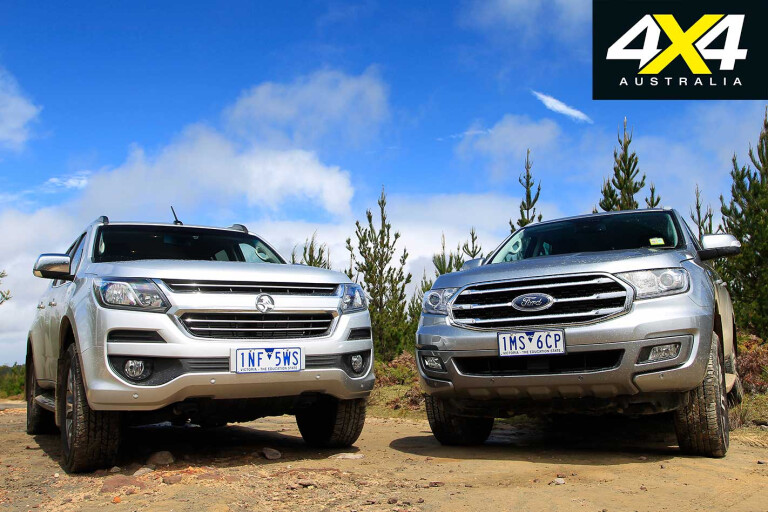
| Holden Trailblazer LTZ | Ford Everest Trend | |
| Engine | 2.8-litre 4-cyl turbo-diesel | 2.0-litre 4-cyl bi-turbo diesel |
| Power | 147kW @ 3500rpm | 157kW @ 3750rpm |
| Torque | 500Nm @ 2000rpm | 500Nm @ 1750-2000rpm |
| Gearbox | 6-speed automatic | 10-speed automatic |
| 4x4 System | Dual-range part-time | |
| Crawl Ratio | 36.4:1 | 47.6:1 |
| Construction | Separate-chassis | |
| Suspension (f) | Independent/coil springs | |
| Suspension (r) | Live axle/coil springs | |
| Wheel/Tyre Spec | 265/60R18 110T | |
| Kerb Weight | 2203kg | 2413kg |
| GVM | 2820kg | 3100kg |
| Payload | 617kg | 687kg |
| Departure angle | 25˚ | 25˚ |
| Rampover angle | 22˚ | 21.5˚ |
| Approach angle | 26˚ | 29.5˚ |
| Wading Depth | 600mm | 800mm |
| Ground Clearance | 218mm | 227mm |
Prices
| Holden Trailblazer | Ford Everest |
| LT: $47,990 | 3.2 Ambiente: $54,190 |
| LTZ: $52,490 | 3.2 Trend: $59,990 |
| Z71: $53,490 | 2.0 Trend: $61,190 |
| 2.0 Titanium: $73,990 | |
| *Prices do not include goverment or dealer charges | |

COMMENTS